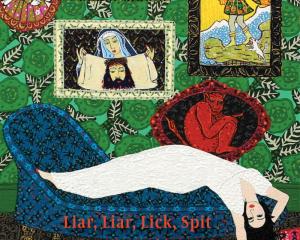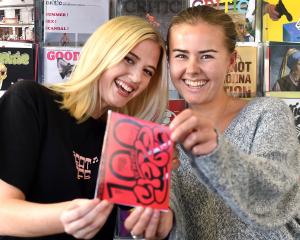Jim Sullivan reviews two beautiful books many would be happy to see under the tree this Christmas.

THE NEW ZEALAND HORSE
Deborah Coddington and Jane Ussher
Massey University Press
About Christmas time the big, fat, coffee table books appear and two of the best this year are about horses and tourism.
The New Zealand Horse goes a long way towards proving writer Deborah Coddington's assertion that, "a dog may be man's best friend, but the horse wrote history''. Her 80-page essay provides a concise and balanced history of the role of the horse in the life of New Zealand.
From the stallion and two mares which Samuel Marsden landed in December 1814 through to the generations of farmers who relied on horsepower, the affinity of Maori with these strange new beasts, the horses at war and at the racetrack and the sheer delight of small girls with ponies: the story is well told.
The New Zealand Horse has almost 400 pages and there is a superb photograph on just about all of them. Some of the illustrations have been seldom seen, but old favourites have been included, like the 1951 photo of a milk cart horse in Wellington's Abel Smith St.
In a lifetime of photography I doubt if Jane Ussher has published a dud shot yet and her gallery of horse portraits is a winner. Horse lovers will drool over the powerful pictures and those who have never been in the saddle will realise what they have been missing.
Ussher's pictures occupy 300 pages and are arranged as a series of self-contained photo essays that work well. Pony riders at the Wanaka A&P Show; working horses at a Clydesdale stud; the race meeting on the Wairarapa coast and the rarely-seen routine of a stallion at work on mating day. The photographer's visit to the Waikouaiti racecourse was on a sombre, cloudy day which, on reflection, is unintentionally inappropriate as it is one track in the South not threatened with closure.
In the early 1900s there were about 300,000 horses in New Zealand working on farms, pulling the coaches and running in races. Today, Coddington estimates, there are still at least 200,000, so the horse is here to stay and it seems unlikely that the internal-combustion engine will ever inspire a book quite as fine as this one.

Peter Alsop, Dave Bamford and Lee Davidson
Te Papa Press
Scenic Playground: The Story Behind New Zealand's Mountain Tourism is also big and beautiful and Peter Alsop, Dave Bamford and Lee Davidson bring their varied professional skills to bear on the task of showing how we made the mountains irresistible. They describe the partnership between government and business in which, "there is a long history of sharing the load, collaborating, and leveraging respective strengths''.
Dunedin's Union Steamship Company was early on the scene with pamphlets, posters and magazines. The railways followed suit and the Tourist Department left no method unused in its search for ways to entice overseas travellers to visit New Zealand and for locals to "see New Zealand first''.
Until the relative prosperity of the 1950s the impression has been that we tended to seek cheaper holiday destinations like a camping ground or a bed and breakfast near Caroline Bay but the publicity material in Scenic Playground suggests that even in the early days the working man was not entirely priced out of the luxury destinations. When the Mount Cook Motor Company took over The Hermitage at Mount Cook in 1922 it offered a weekend away from Timaru return for under £7 (about $700 today).
The book focuses on the means of getting the message across and the headings of the chapters confirm a goldmine for anyone interested in printing, advertising art and the other weapons of persuasion. Photographs, glass slides, brochures, lithographs and ephemera are just a few of the 10 subjects covered and the large format allows the maps, posters and photographs to be shown at their best.
The classic shot of bare-footed Joan Hamilton driving the tour bus on the Skippers Road is just one of many and is a reminder of how things began. Joan and her husband Ian were among the pioneers who laid the foundations more than 60 years ago for today's tourism giant Skyline Enterprises. The early Queenstown posters reinforce the impression it was once a pleasant, sleepy country town before the very publicity the book explores drew the world to its doorstep. The energy of the Mount Cook Tourist Company is well-portrayed in the range of posters produced to encourage visits to the Hermitage. When rail was king and the company was Timaru-based the phrase "Train to Timaru'' became part of the tourist vocabulary.
Scenic Playground is social history at full throttle.
With these two books on your coffee table (if it will bear the weight) you will have your visitors engrossed for hours.
Jim Sullivan is a Patearoa writer.












